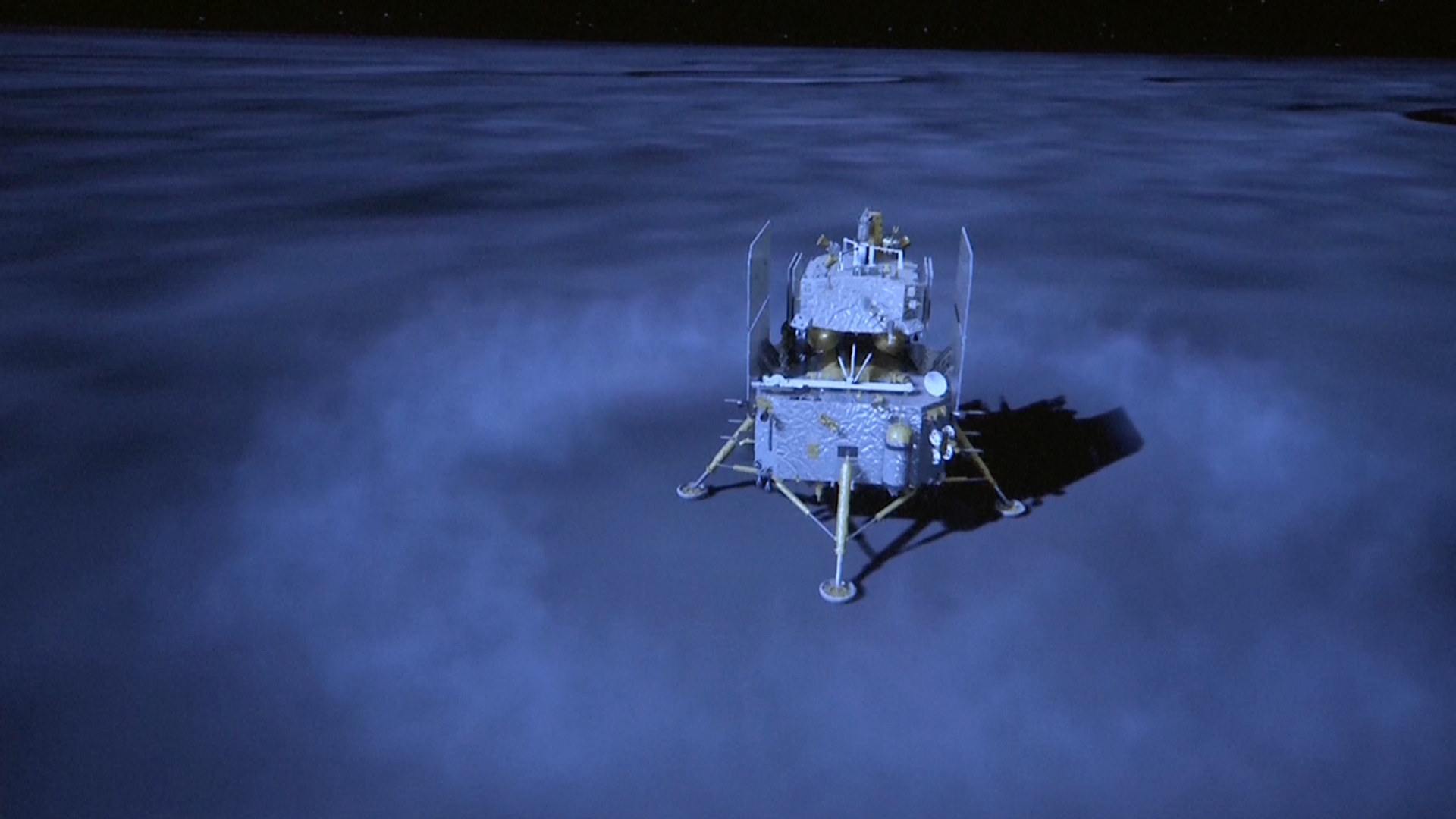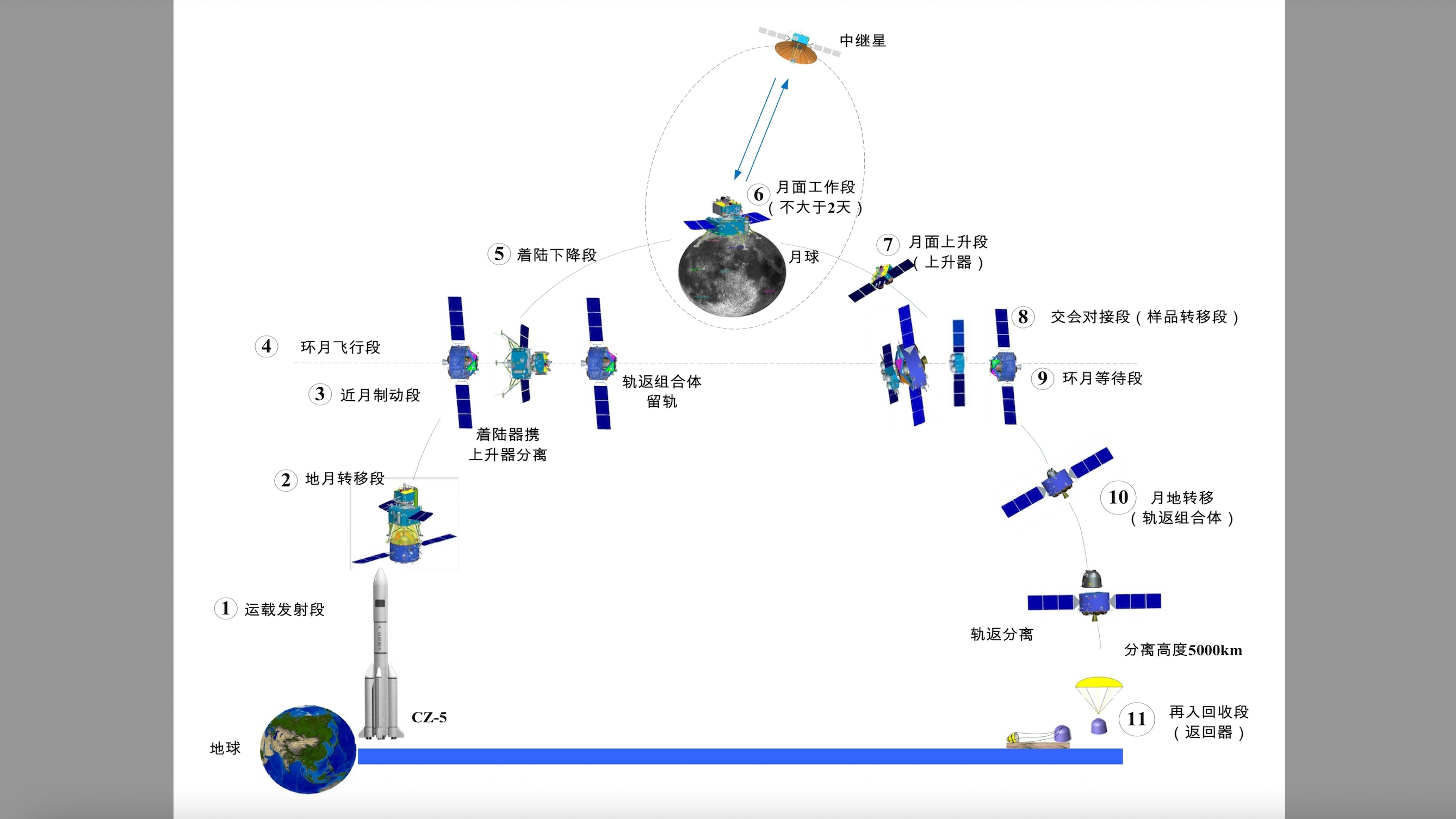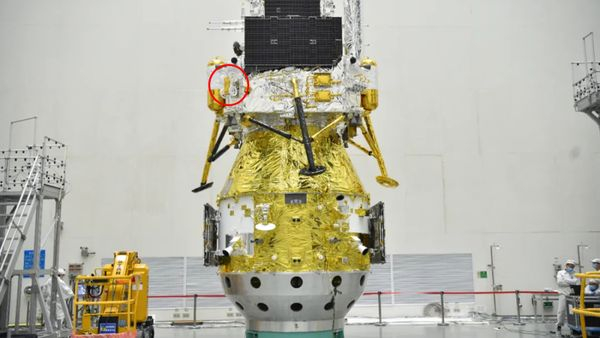China has landed on the moon's mysterious far side — again.
The robotic Chang'e 6 mission touched down inside Apollo Crater, within the giant South Pole-Aitken basin, at 6:23 a.m. Beijing Time on Sunday (June 2) , according to Chinese space officials. It was 6:23 p.m. EDT (2223 GMT) on June 1 at the time of the landing. The probe "successfully landed in the pre-selected area," China's space agency said.
The China National Space Administration (CNSA) now has two far-side landings under its belt — this one and Chang'e 4, which dropped a lander-rover combo onto the gray dirt in January 2019. No other country has done it once.

And Chang'e 6 will make further history for China, if all goes according to plan: The mission aims to scoop up samples and send them back to Earth, giving researchers their first-ever up-close looks at material from this part of the moon.
"The Chang'e-6 mission is the first human sampling and return mission from the far side of the moon," CNSA officials said in a translated statement. (To be clear: Chang'e 6 is a robotic, not crewed, mission.) "It involves many engineering innovations, high risks and great difficulty."
Related: China's Chang'e 6 mission has a big lunar mystery to solve
Sampling a new environment
Chang'e 6 launched on May 3 with a bold and unprecedented task: haul home samples from the moon's far side, which always faces away from us. (The moon is tidally locked to Earth, completing one rotation on its axis in roughly the same amount of time it takes to orbit our planet. So observers here on Earth always see the same side of our natural satellite.)
Get the Space.com Newsletter
Breaking space news, the latest updates on rocket launches, skywatching events and more!
Every lunar surface mission before Chang'e 4 targeted the near side, largely because that area is easier to explore. It's harder to communicate with robots operating on the far side, for example; doing so generally requires special relay orbiters, which China launched ahead of both Chang'e 4 and Chang'e 6. China's newest moon relay satellite, called Queqiao-2, aided the Chang'e 6 landing, CNSA officials said.
Chang'e 6 arrived in lunar orbit about four days after liftoff. It spent the next few weeks scrutinizing its planned landing site and gearing up for today's big event, which went according to plan: Chang'e 6's lander came down softly in Apollo Crater, leaving the mission's orbiter, with its attached Earth-reentry module, circling the moon.

The lander will spend the next few days studying its surroundings and collecting about 4.4 pounds (2 kilograms) of lunar dirt and rock. Some of these samples will be scooped from the surface and some will be dug from up to 6.5 feet (2 meters) underground, using Chang'e 6's onboard drill.
This material will then be launched into lunar orbit by a rocket that rode down with the lander. The sample container will rendezvous with the Chang'e 6 orbiter, then make the long trek back to Earth, eventually touching down here under parachutes on June 25.
Chang'e 6 is also carrying a tiny moon rover and has a variety of scientific experiments onboard the lander.

Scientists will study the returned material in detail, seeking insights about the moon's history and evolution and clues about why the lunar far side is so different than the near. The dark volcanic seas known as maria are common on the near side, for example, but are rare on the far side, for reasons that remain mysterious.
Researchers will doubtless compare the Chang'e 6 material to the samples collected on the moon's near side by Chang'e 5, which came down to Earth in December 2020. (Chang'e 5 and Chang'e 6 are sister missions, with virtually identical architectures.)
Related: The moon: Everything you need to know
Big lunar dreams
The Chang'e moon program, which is named after the Chinese moon goddess, has launched increasingly complex and ambitious missions over the past 17 years.
Chang'e 1 and Chang'e 2 sent orbiters to the moon in 2007 and 2010, respectively. Chang'e 3 marked China's first trip to the lunar surface, putting a lander-rover duo on the near side in late 2013. Chang'e 4 landed a similar pair on the far side in early 2019. Chang'e 5-T1 launched a test capsule around the moon and back to Earth in 2014, proving out the gear that could get lunar samples here safely, which Chang'e 5 did in late 2020.
And there are more missions to come. Chang'e 7 is scheduled to launch in 2026 to assess the resource potential of the moon's south polar region, which is thought to harbor large stores of water ice. Chang'e 8, which will lift off two years later, will test ways to use those resources on-site — building a structure out of lunar dirt and rock, for example.
And all of this robotic work will lead to something even bigger, if all goes according to plan: crewed missions to the moon, which China aims to start launching by 2030. The nation wants to build an astronaut outpost near the south pole called the International Lunar Research Station later in the 2030s, with help from partners such as Russia, Belarus and Pakistan.
The United States has similar aims with its Artemis program, which is targeting late 2026 for its first crewed lunar landing. The U.S. is also building a moon-exploration coalition via a diplomatic framework called the Artemis Accords; more than 40 nations have signed on to date.
Join our Space Forums to keep talking space on the latest missions, night sky and more! And if you have a news tip, correction or comment, let us know at: community@space.com.

Michael Wall is a Senior Space Writer with Space.com and joined the team in 2010. He primarily covers exoplanets, spaceflight and military space, but has been known to dabble in the space art beat. His book about the search for alien life, "Out There," was published on Nov. 13, 2018. Before becoming a science writer, Michael worked as a herpetologist and wildlife biologist. He has a Ph.D. in evolutionary biology from the University of Sydney, Australia, a bachelor's degree from the University of Arizona, and a graduate certificate in science writing from the University of California, Santa Cruz. To find out what his latest project is, you can follow Michael on Twitter.
-
Unclear Engineer There is now video from the lander showing its approach to the lunar surface.Reply
This is an impressive mission design, and it has worked flawlessly so far. Hoping for complete success.
Also hoping that China will share a bit of the 2 Kg of sample returned with some of us here in "the West". They did so in their previous lunar sample return from the near side. -
ndsurvivor If they can return the sample at a fraction of the cost of the Apollo missions, Kudos.Reply
I suspect there may be more "asteroid" debris on the far side. The near side seems to be mostly composed of the same stuff as Earth.








